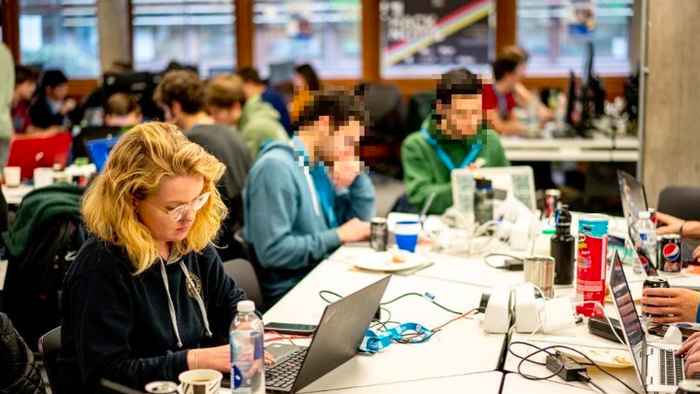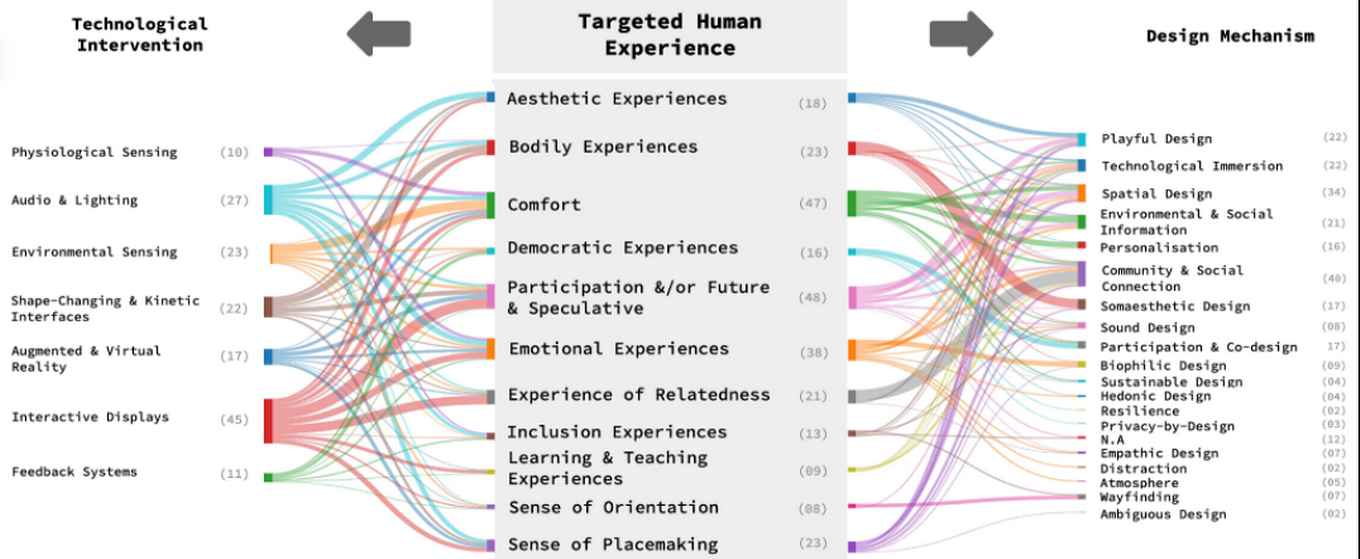Two paper awards for Digital Interactions Lab at CHI conference
26 June 2025

The best Paper Award was for Shruti Rao with the paper ‘What Do We Design for When We Design Smart Buildings? A Scoping Review of Human Experience Design Research in Buildings’.
Siân Brooke received the Honorable Mention Award for the paper ‘Python is for girls!’ Masculinity, Femininity, and Queering Inclusion at Hackathons.’
The third paper ‘An Umbrella Review of Reporting Quality in CHI Systematic Reviews: Guiding Questions and Best Practices for HCI’ of Katja Rogers and others was also published in the ACM Transactions on Human Computer Interaction journal.
SIAS group was also represented at alt.chi (a forum for controversial, risk-taking, and boundary-pushing research at CHI) with the following paper ‘The Cloud Weaving Model for AI development’ authors Darcy Kim and others.
CHI is the premier Human Computer Interaction (HCI) conference, organised by the Association for Computing Machinery (ACM). It is also one of the top-ranked conferences in computer science.
CHI 2025 received 5,014 submissions. Of these, only 50 papers (top 1%) were awarded a Best Paper Award, while only 201 papers (5%) were awarded an Honourable Mention. See CHI 2025 Awards Announcement.
What Do We Design for When We Design Smart Buildings? A Scoping Review of Human Experience Design Research in Buildings
Best Paper Award
Authors: Shruti Rao, Katja Rogers, Judith Good, and Hamed Alavi.
About the paper
The researchers conducted a scoping review to analyse 192 peer-reviewed publications from 1996 to 2024 to map the state of research on human experiences in smart buildings. They identified 11 distinct human experience research areas, including emotional, social (e.g. relatedness), and civic (e.g. democratic) dimensions; 20 design mechanisms identified as strategies to mediate or shape these experiences, such as privacy, social connectedness, and inclusion; and 7 types of technologies developed and deployed in smart building research, including augmented and virtual reality systems, interactive displays, and environmental sensing technologies.
Research interests
Shruti Rao explores how smart indoor environments can be designed to support affective and multisensory experiences. She combines interaction design and ecological thinking to explore how ambient technologies—especially sound—can foster more meaningful connections between people and their surroundings. She is interested in connecting with others working in areas such as sound, affective and context-aware systems.
Python is for girls! Masculinity, Femininity, and Queering Inclusion at Hackathons
Honorable Mention Award
Author: Siân Brooke.

About the paper: At seven UK university hackathons, Siân explored how queerness is expressed (and constrained) within tech’s dominant cultures. While rainbow stickers and cosplay signal inclusion, She found that femininity (not just being a woman) remains deeply devalued. Queer visibility is welcomed, but only when it aligns with masculine-coded technical authority. In other words, you can be queer or a woman—as long as you are not too feminine.
- Reconceptualizing Exclusion: She shifts the conversation from “where are the women?” to how femininity itself is coded as technically incompetent, even by queer participants. Inclusion is conditional on adopting masculine norms.
- Masculinity in the Tech Stack: Programming languages like Python are mocked as “feminine”. Technical skill is measured by obscure, low-level language mastery, upholding gatekeeping through gendered tool hierarchies.
- Queering ≠ Disrupting: Queer presence doesn’t inherently challenge hegemonic structures. In fact, many queer participants replicate dominant “geek” masculinities to gain credibility—reinforcing, not resisting, social norms.
- Hackathon Design as Infrastructure: From team dynamics to toilet signage, the paper shows how gender bias is embedded not just socially but materially—in tools, smells, interfaces, and spatial layout.
Her research explores how bias is coded into technical tools, from programming languages to interface design, and how these embedded norms shape who is seen as “legitimate” in computing spaces. She is particularly interested in using this lens to design more inclusive development environments, which is the focus of my Veni project on accessible IDEs for neurodiverse women.
An Umbrella Review of Reporting Quality in CHI Systematic Reviews: Guiding Questions and Best Practices for HCI
And is published in the ACM Transactions on Human Computer Interaction journal).
Authors: Katja Rogers, Teresa Hirzle, Sukran Karaosmanoglu, Paula Toledo Palomino, Ekaterina Durmanova, Seiji Isotani, Lennart E. Nacke.
About the paper
Systematic reviews (SRs) are a powerful way to gather and structure knowledge, but the way they are described in research papers is often not particularly detailed. In the field of human–computer interaction (HCI), SRs are becoming increasingly common. This prompted them to explore how such research is reported at CHI—the flagship conference venue of their field.
To explore this in detail, they carried out an umbrella review (a review of reviews) and checked how well CHI papers follow SR reporting guidelines like PRISMA and ENTREQ.
They highlight areas where reporting of SRs can improve: particularly around how studies are evaluated, how findings are combined, and how methods are documented (like creating a clear protocol). Finally, they offer a set of practical guiding questions and tips for HCI researchers for reporting SRs.
The Cloud Weaving Model for AI development
SIAS represented at alt.chi (a forum for controversial, risk-taking, and boundary-pushing research at CHI) with the following paper ‘The Cloud Weaving Model for AI development’.
Authors: Darcy Kim, Aida Kalender, Sennay Ghebreab, Giovanni Sileno.
Summary: Viewing AI as a practice rather than a product, the paper reimagines the relationships and interactions of those involved in and impacted by AI in metaphorical terms. Through symbols inspired by non-Western traditions and natural motifs (clouds, spiders, webs), the 'Cloud-weaving model' promotes a community-oriented stance on AI.
